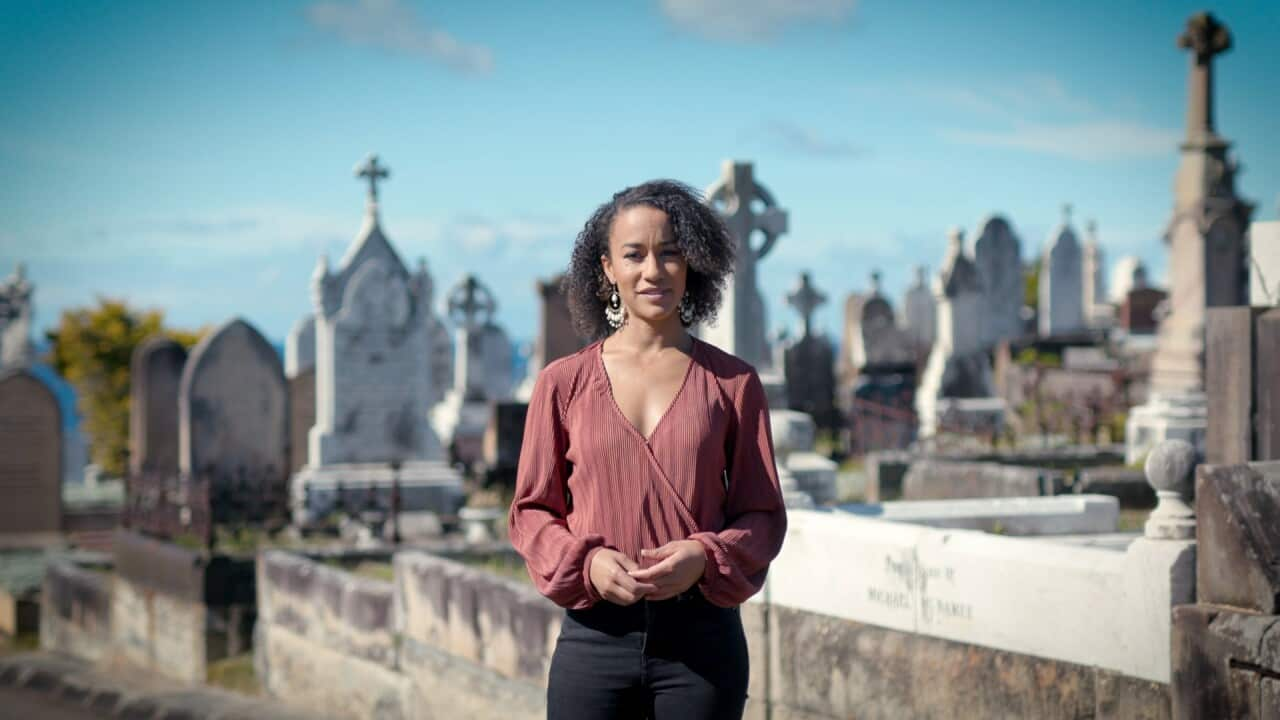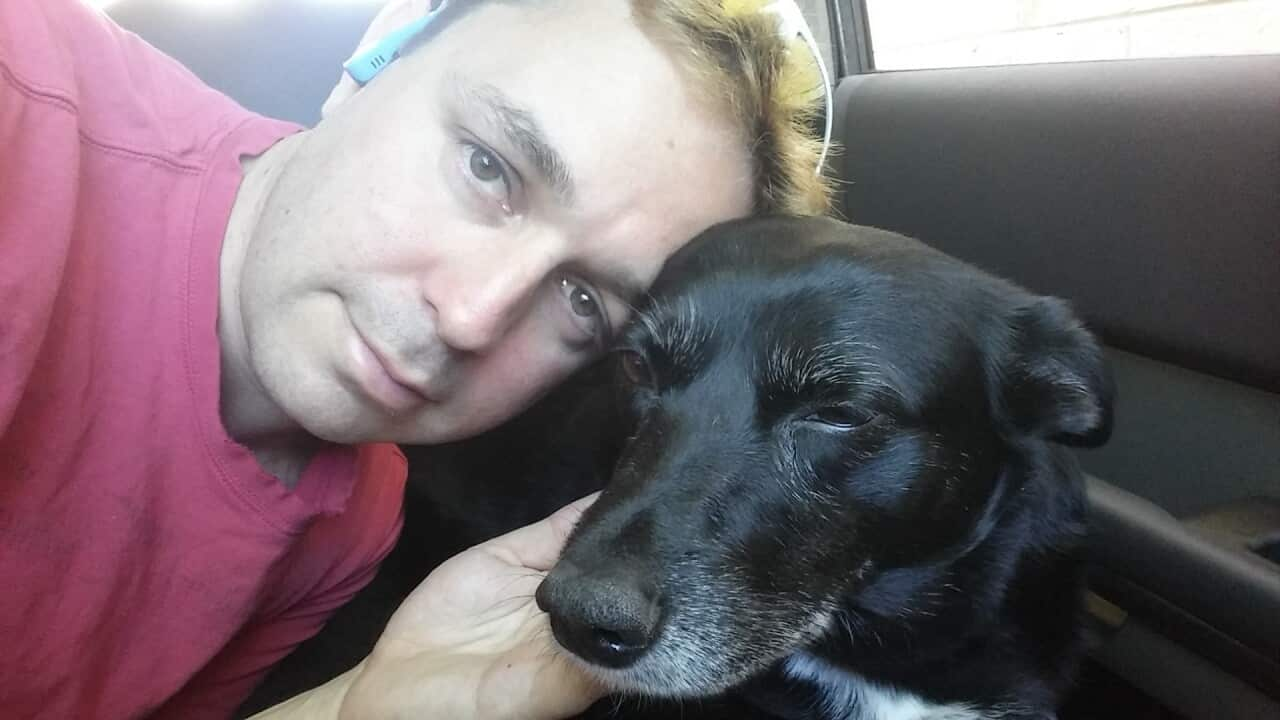Key Points
- Architect David Neustein said historically not a lot of forward planning had gone into Australian cemeteries.
- Natural burials could relieve the pressure on urban space and regenerate regional land.
- Minimal site markings are used at natural burial grounds with the land kept in a natural state.
Australian cemeteries are running out of space.
Burial was once the most common method of dealing with the dead, and crammed metropolitan cemeteries are a visual reminder of this.
Tens of thousands of burials occur across the country each year, taking cemeteries near to capacity.
Could the issue of finding burial space be solved by a re-think of how and where we bury the dead?
Australian cemeteries today
In Sydney, multiple religious groups are set to run out of burial space within three years, while in cemeteries such as Perth's Karrakatta, old, unmaintained headstones are removed from graves, so another burial can be placed between those old, existing burials.

Many of Australia's first cemeteries have since been built over, including a colonial graveyard beneath Sydney's Town Hall which archaeologists investigated in 2008. Source: Getty / AFP
As populations grow and people continue to choose to be buried and have their graves marked out in a traditional cemetery when they die, more and more land becomes locked away from use.
Architect David Neustein said historically not a lot of forward planning had gone into Australian cemeteries. He cited Sydney's earliest cemetery which was located where the Town Hall now is and "then then next one had to be removed to make way for Central Station and in Melbourne their earliest cemetery is under the Queen Victoria Markets."
"We didn't make them large enough, they were just done in a slapdash manner and we found ourselves quickly scrambling to try to find new space," he said.
Mr Neustein said instead of thinking short term, planning needed to look a couple of hundred years ahead.
Natural burials outside of cities
While Australia’s cities are heavily populated, the country as a whole is sparsely inhabited and Mr Neustein believes regional land outside of cities is the ideal place for cemeteries to be located, but not cemeteries as we now know them.
He would like to see more land provided for natural burial grounds without large gravestones, which could be eventually used as public open space.
As well as minimal site markings, natural burials are done without embalment or the use of caskets, allowing for the decomposition of bodies into the earth.

This Australian bushland is also a natural burial ground in Bendoc, Victoria. Source: Supplied / Earth Funerals and Other Architects
This is in contrast to traditional burials, in which the environmental impact is greater at each stage of preparation, burial and for years after as decomposition takes place.
“Outside the cities, there's a lot of very poor conditioned land because of our single use farming practices. So theoretically, natural burials are really well suited to regenerating that environment."
Traditionally people have chosen to be buried close to where they had lived, but Mr Neustein said he felt this barrier could be overcome once people became familiar with the concept of natural burials in rural settings.

Architect David Neustein wants Australians to rethink the idea of burial space. Source: Supplied / Charles Dennington
READ MORE

How to have an eco-friendly death
Mr Neustein said natural burials could take orientation of the body in to consideration to adhere to certain religious beliefs.
“The faiths that have particular views about burial go back a long way and typically the earliest forms of burials were natural burials, as in the technologies around coffins, embalmment and gravestone, those things have come later, so people of certain faiths, there’s really no reason why they couldn’t have a natural burial," he said.
Mr Neustein said if planned and managed well, natural burials could prove sustainable for generations to come.
"The rates of decomposition in healthy soil you typically need sort of 25 to 50 years and in 200 years that ground won't see evidence of where people were buried.
"So you could easily just rebury in that same space and possibly in a different way. So it'd be like crop rotation, to use a blunt term, where you don't actually really need to expand anymore," he said.
A Jewish perspective on natural burials
President of the Rabbinical Association of Australasia, Rabbi Yaakov Glasman, indicated it could be possible for Jewish communities to embrace natural burials of the type suggested if certain factors were accounted for.
“According to Jewish law, the body is allowed to be buried directly into the ground, provided it's covered in shrouds or prayer shawls and that is a common practice in Israel,” he said.
“It certainly isn't the existing practice here in Australia and a lot of other countries, there’s a plain pine box, but technically, according to Jewish law, natural burials are permitted.”
Rabbi Glasman said Jewish families commonly visited the graves of their loved ones at least once a year, on the anniversary of their loved ones having died as well as if they attended the cemetery for someone else’s funeral.
“There would be no Jewish legal impediment to having a Jewish cemetery in regional areas of Australia, it’d just really require a concerted effort by enough Jewish families agreeing to have their burial or their loved one’s burials take place within that cemetery,” he said.
Rabbi Glasman pointed out it was Jewish tradition to bury Jewish people together, separated from those of other faiths, so if natural burial areas had faith specific areas like most cemeteries already do, the alternative method may align with community expectations.
He said the marking of a grave with the person’s Hebrew name and the date they died was considered respectful in the Jewish community.
“So at the very least, a very simple plain stone monument is required, but it certainly does not have to be elaborate,” Rabbi Glasman said.
Natural burials with a twist
For those who like the idea of natural burials and want to go a step further, there are a some interesting innovations in natural burials.
American Actor Luke Perry, who died in 2019 is understood to have been buried in a suit made of mushrooms.
Designed by Jae Rhim Lee, who did a TedX talk dressed in one of her mushroom suits, they are designed to assist in decomposition, clean the toxins from bodies and deliver nutrients to the surrounding environment.
In Victoria, at least one operator is providing upright burials.
On its website, the Kurweeton Road Cemetery, located near near Mt Elephant, about 180km west of Melbourne, describes how upright burials solve issues of space and unnecessary use of resources, while delivering an environmentally friendly option at a fixed price.
It carries out vertical burials on land kept in its natural state, with no grave markers or headstones.
Bodies are transported in biodegradable body bags to the site using a purpose-built catafulque with wheels which is raised vertically and places the body in the three metre deep, 70 centimetre wide grave, feet first.
Kurweeton Road Cemetery’s managing director Tony Dupleix said establishing the cemetery, which is the first of its kind in Australia, was a struggle.
"It took 24 years of petitioning and lobbying to get permission to operate, for no government minister would give approval because there was no precedent," he said.
About 100 burials have been carried out at Kurweeton since it became operational about 18 years ago.
What is stopping greater growth in natural burials
Mr Neustein said there needed to be a greater focus on solving the issue of space within Australian cemeteries and providing land for natural burial grounds outside of more major cities.

Minimal markers can be used to assist loved ones find the spot where their friend or family member is buried in a natural burial ground. Credit: Earth Funerals and Other Architects
He said the multiple benefits associated with natural burials in regional areas should have governments "on the front foot" to find operators, set aside land and set up the best standards for such spaces.
"We've gotten to this problem [cemeteries running out of space] because of lack of thinking over hundreds of years, the typical cemetery operator works on a 50 year time span. So it was 100 years ago that we ran out of space under the Town Hall or the Victoria markets.
"If we plan for what happens in a couple of 100 years, ideally we don't have those sorts of issues happening again."



